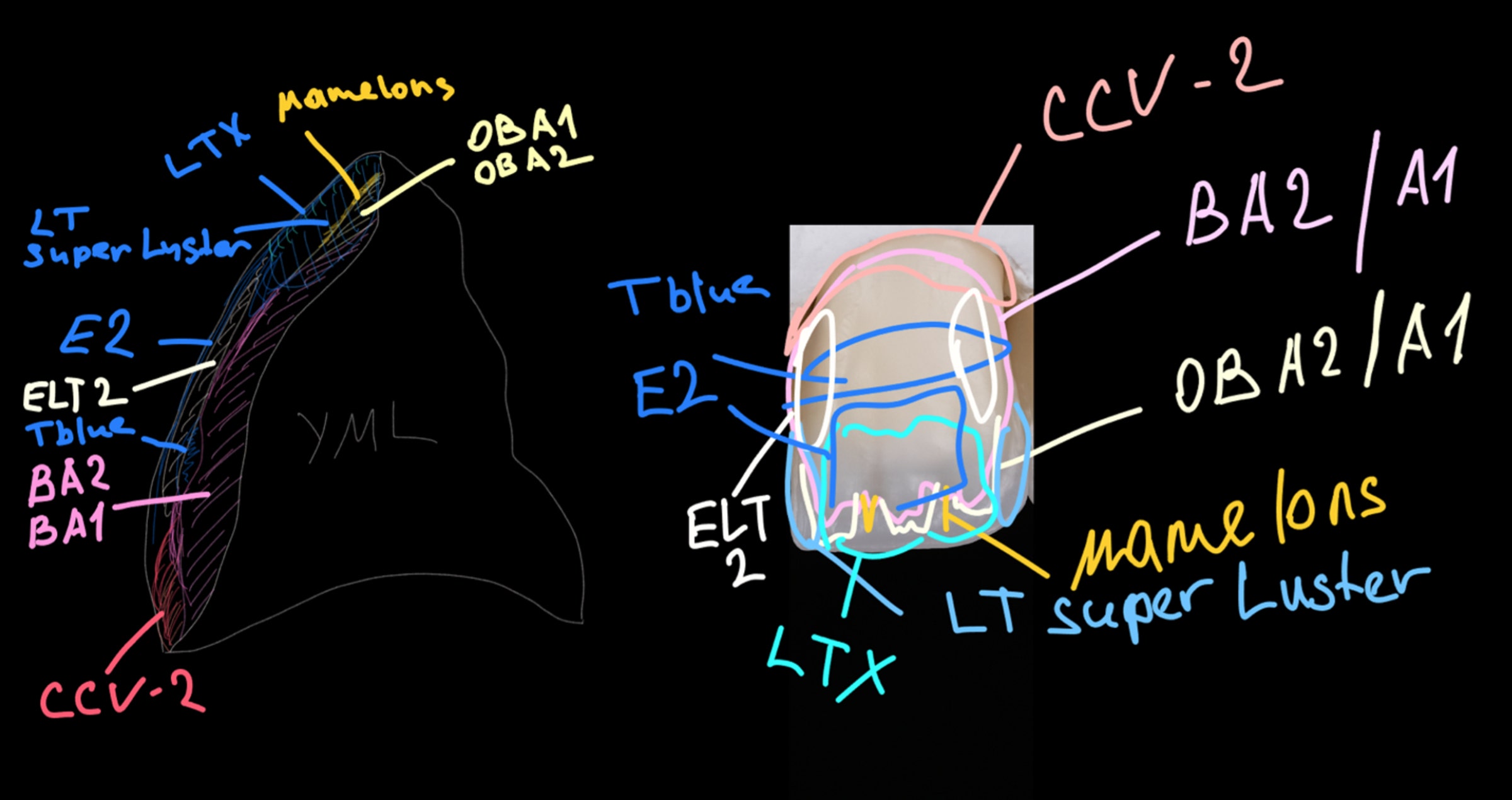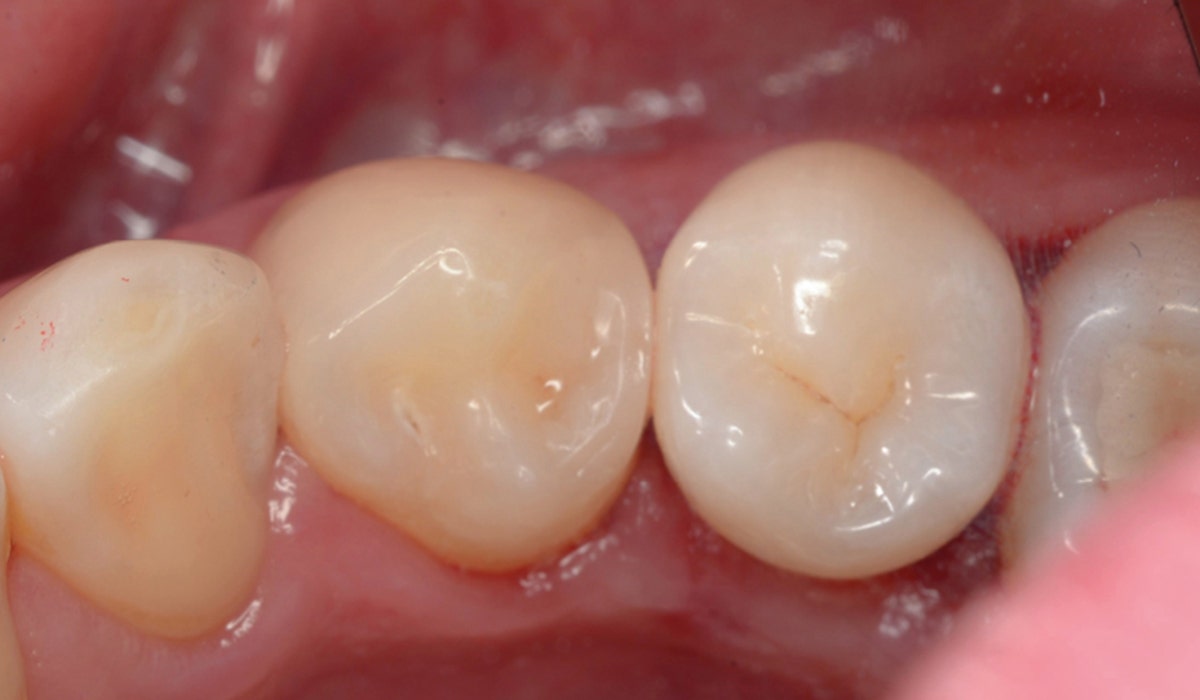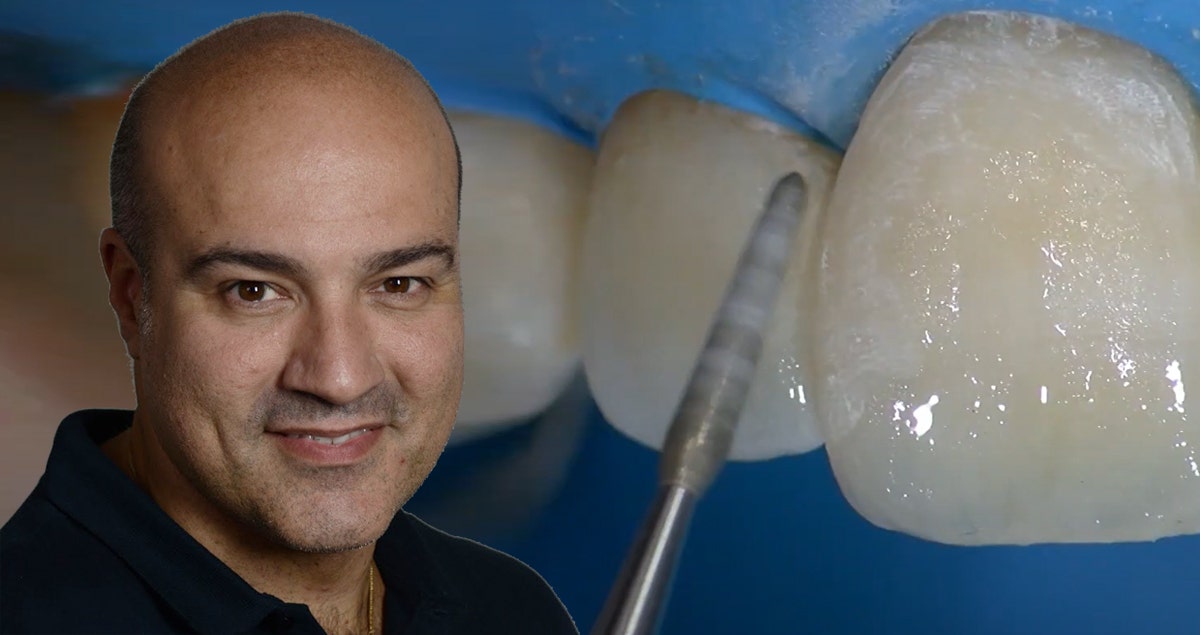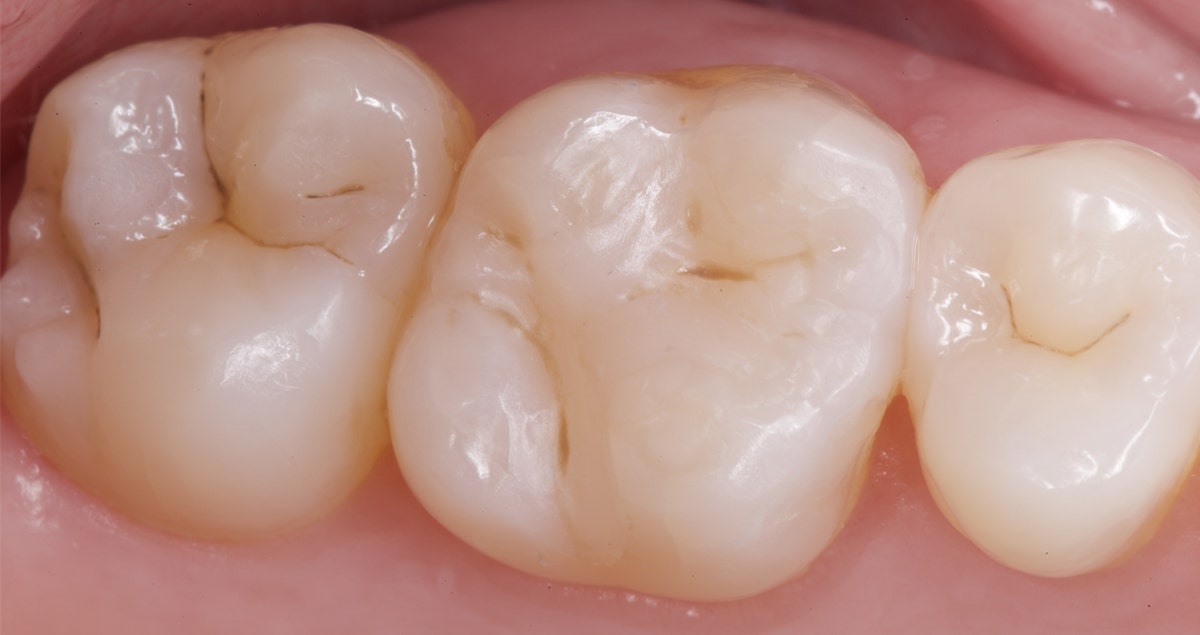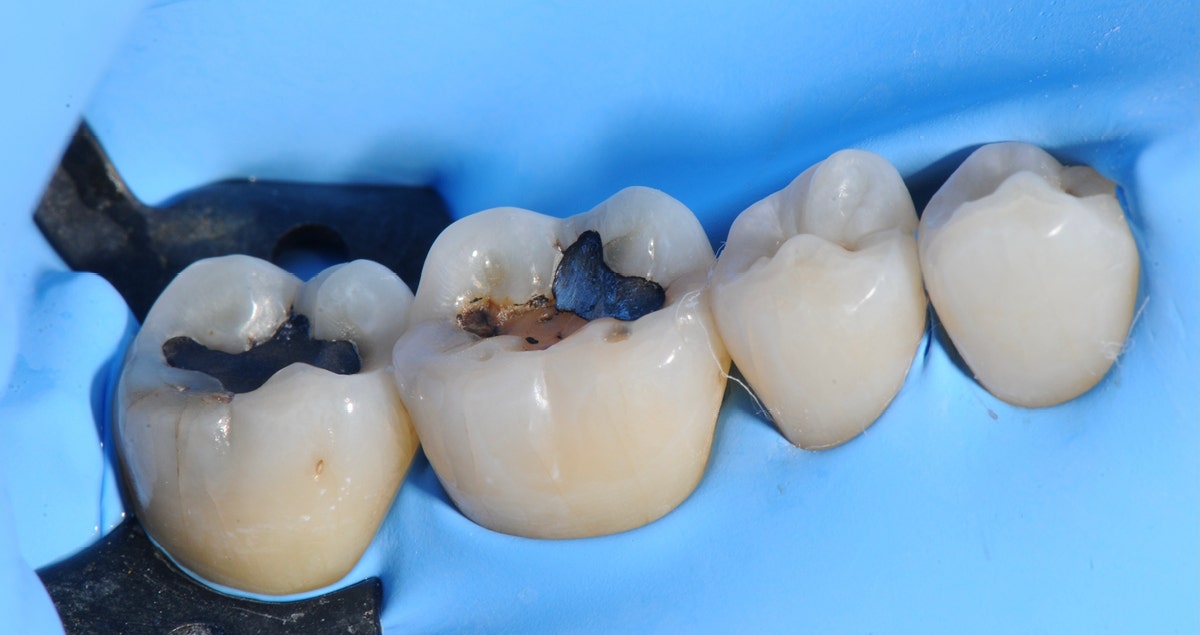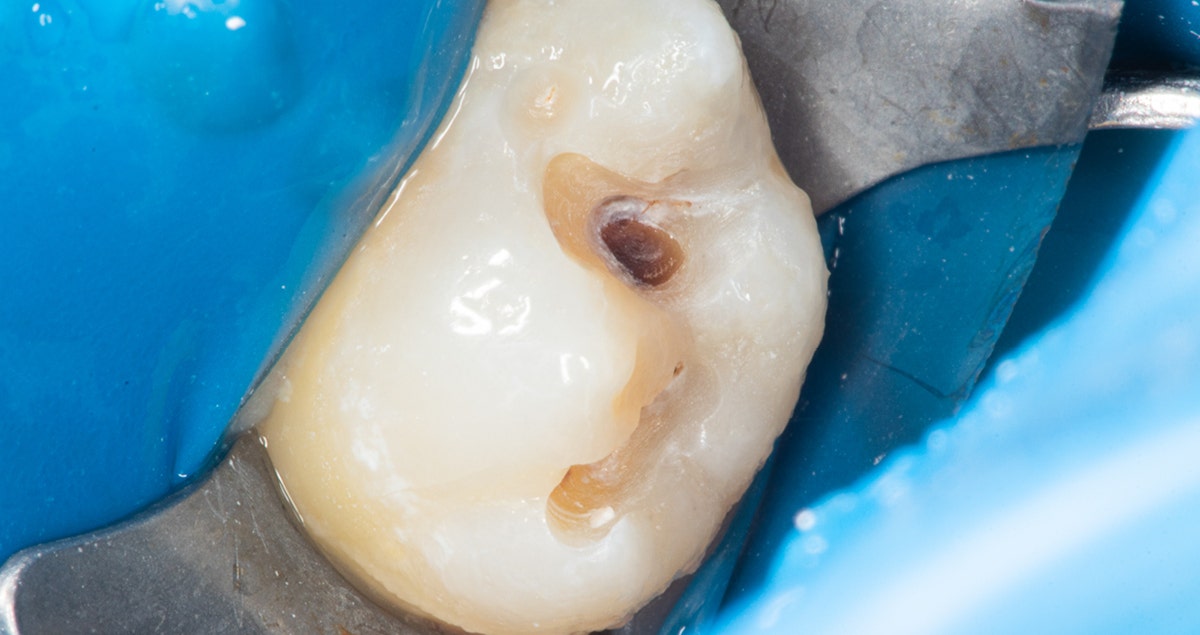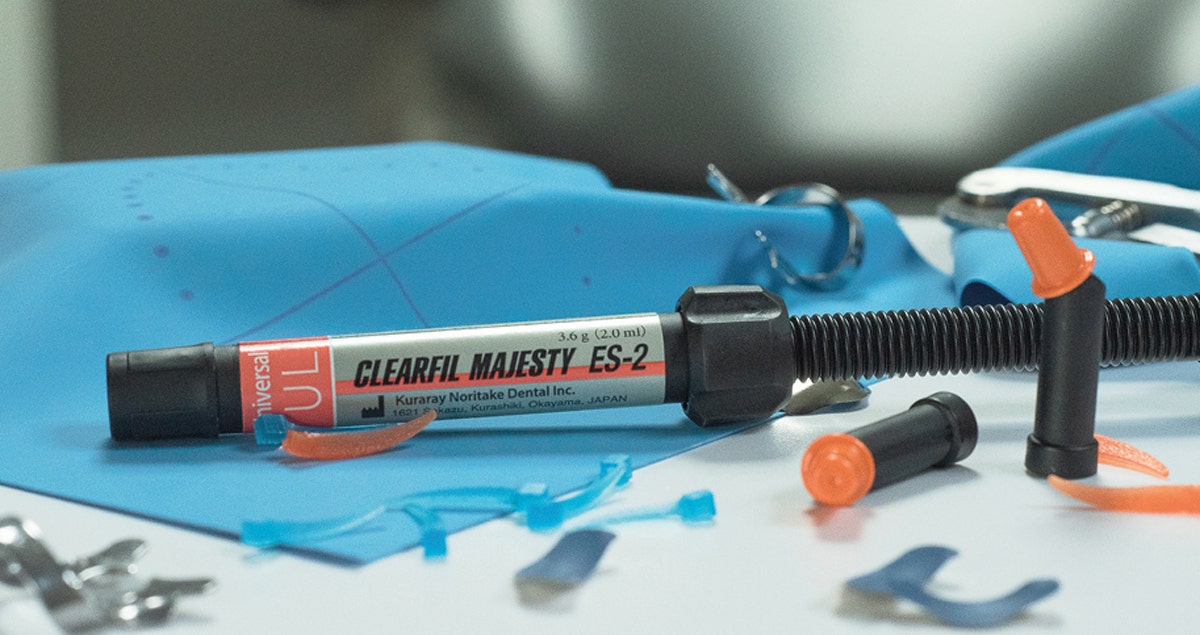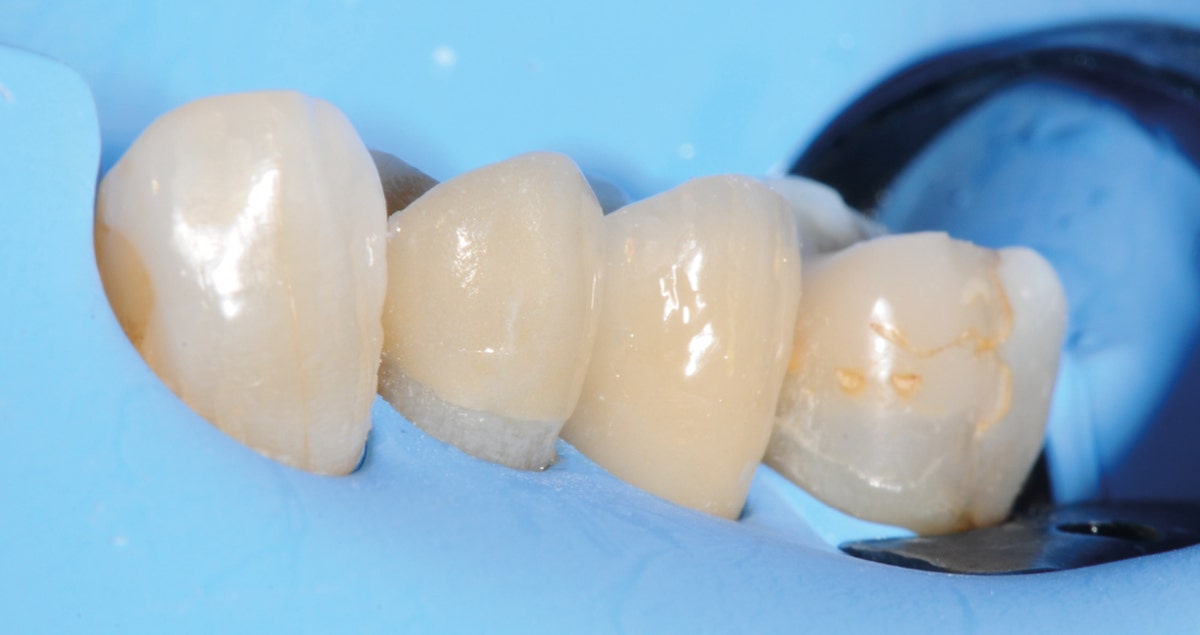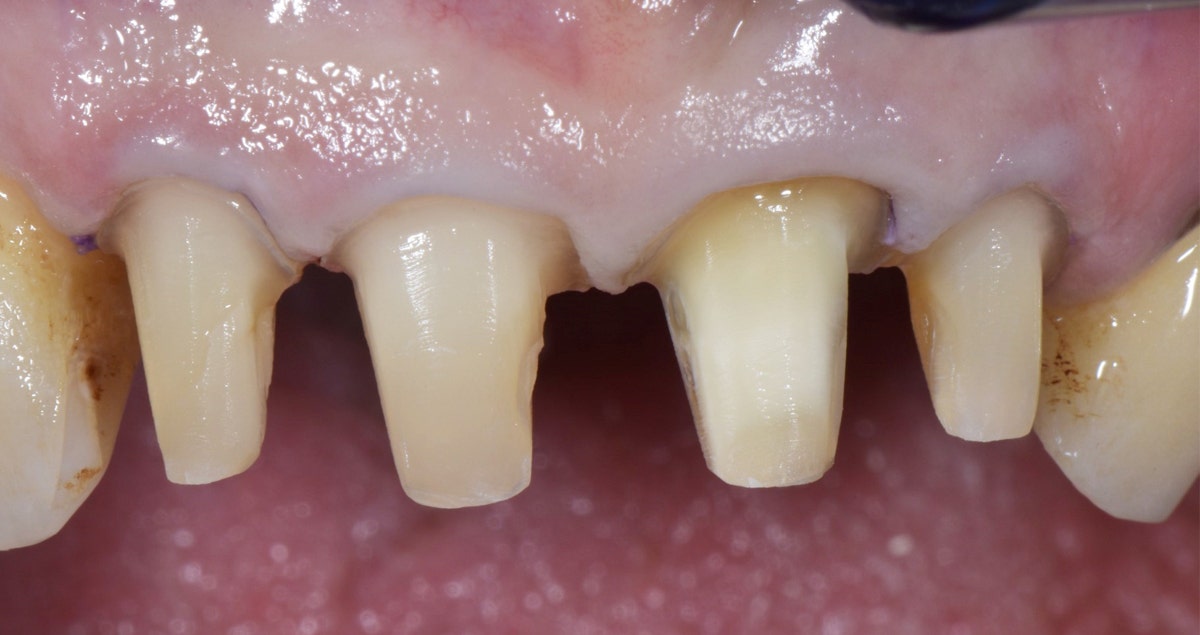Restoration of a class II occluso-distal cavity with composite
Case by Aleksandra Łyżwińska, DMD
This clinical case concerns a patient with a lesion on the occluso-distal aspect of the mandibular left first premolar. We opted for a direct treatment approach with a combination of flowable and high-viscosity composite resin (CLEARFIL MAJESTY™ ES Flow - Super Low A2, CLEARFIL MAJESTY™ ES-2 Classic A2). In order to establish a strong bond between the tooth structure and the restorative material, we decided to selectively etch the enamel and then apply a clinically proven self-etch adhesive (CLEARFIL™ SE BOND 2).
Fig. 1. Initial clinical situation.
Fig. 2. Appearance of the premolar after caries removal.
Fig. 3. Placement of a sectional matrix for anatomical shaping, the establishing of tight interproximal contacts and protection of the adjacent tooth.
Fig. 4. Appearance of the tooth structure after selective enamel etching.
Fig. 5. Interproximal wall built up with CLEARFIL MAJESTY™ ES-2 Classic (A2 shade) and cavity filled with CLEARFIL MAJESTY™ ES Flow - Super Low A2.
Fig. 6. After initial polishing.
FINAL SITUATION
Fig. 7. Occlusal view of the treatment outcome after finishing and polishing.
Fig. 8. Follow up after 1 week.
Dentist:
ALEKSANDRA ŁYŻWIŃSKA
Warsaw, Poland
Aleksandra Łyżwińska, DMD, is a passionate aesthetic and adhesive dentist. Driven by Evidence Based Dentistry, her goal includes using modern composite materials and bonding agents in her clinical practise. In addition to her primary job, she worked as a lecturer and an assistant professor at the Department of Conservative Dentistry and Endodontics of Medical University of Warsaw, her alma mater.






